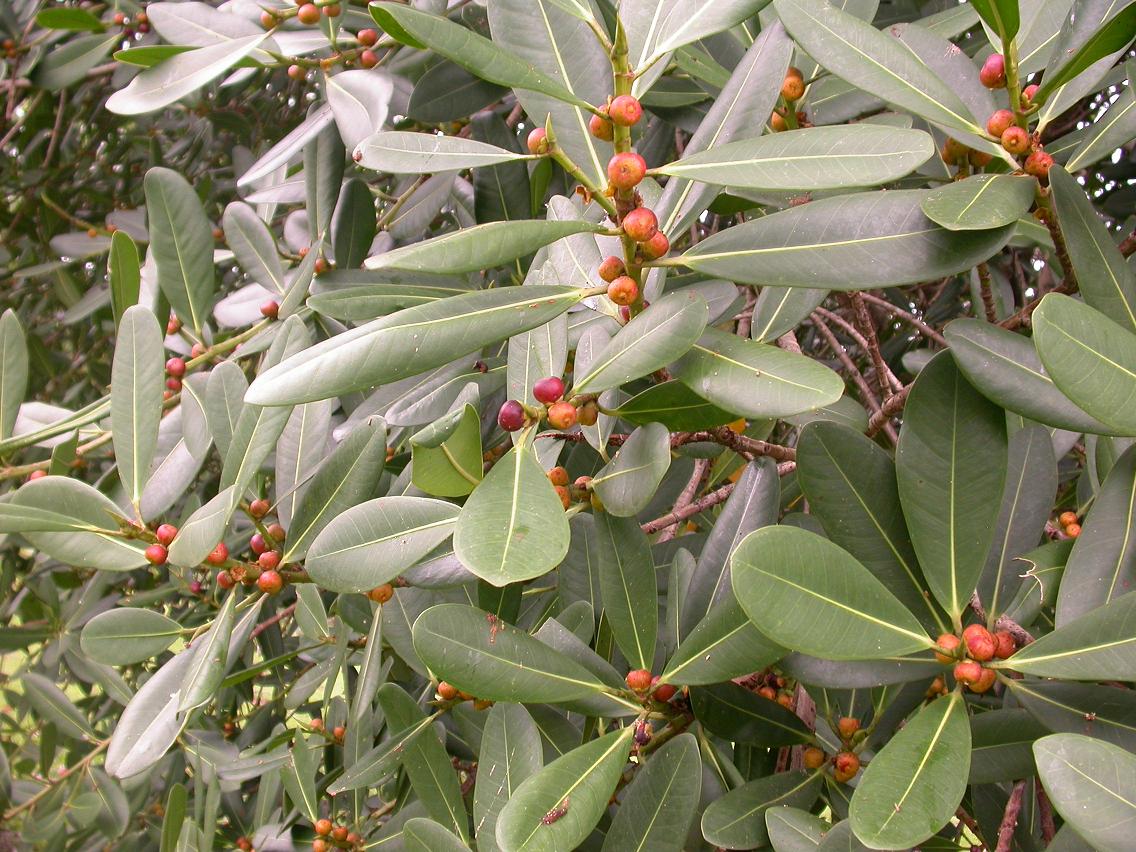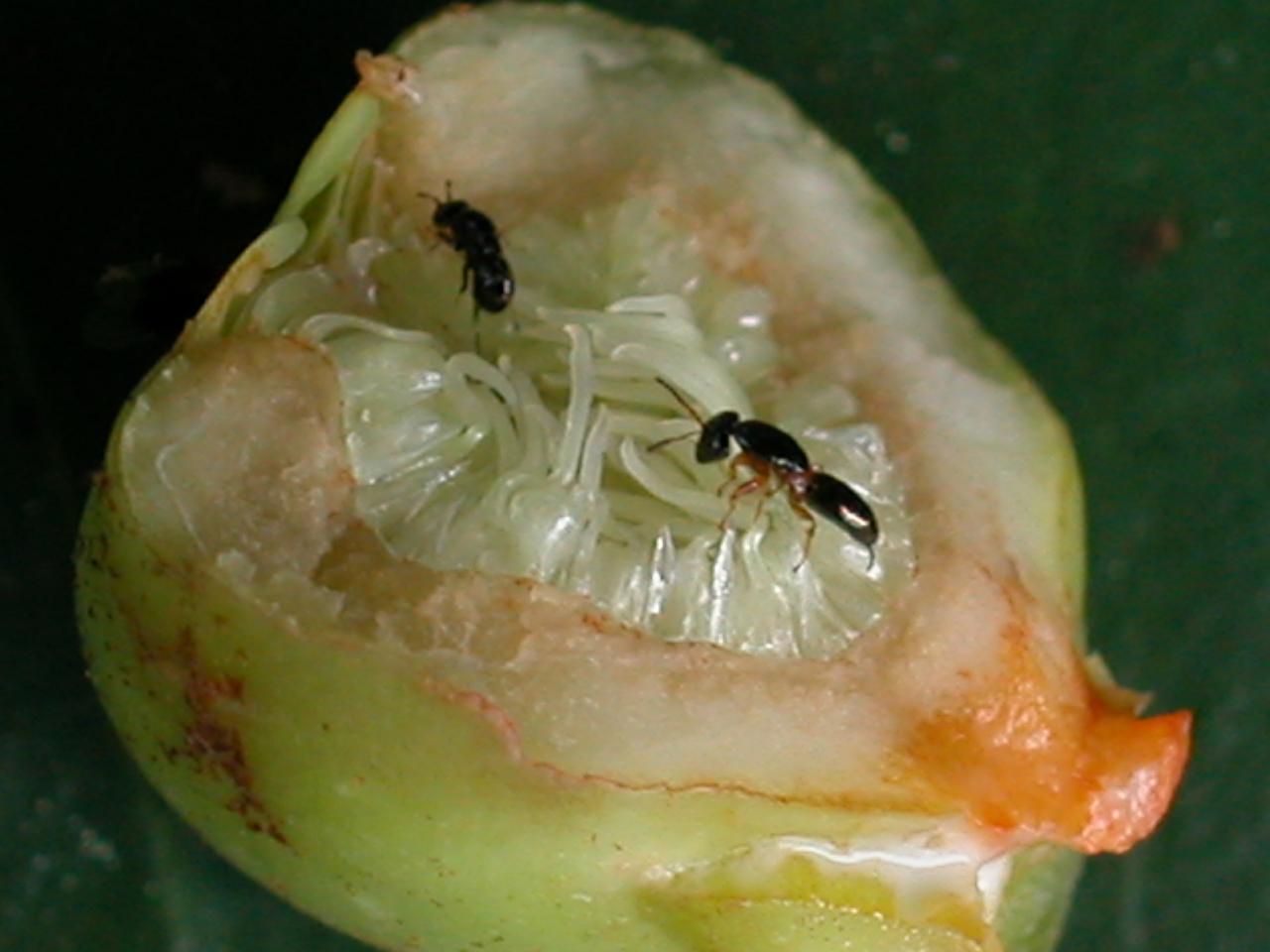Prof. Yang Darong and his research team of Xishuangbanna Tropical Botanical Garden (XTBG) have been keeping on studies on the co-evolution of figs and fig wasps for many years. They have conducted many controlled pollination experiments with fig trees.
During 20 Sept. and 26 Oct. 2010, they began to perform experimental introductions of pollinators on one synchronously-fruiting tree (Ficus curtipes, a monoecious tree pollinated by foundress females of an undescribed species of Eupristina) in XTBG (21°55′N, 101°25′E). Twigs bearing pre-receptive syconia were covered with mesh bags to prevent oviposition by pollinators and other fig wasps.
They investigated the effects of age at pollination on the numbers and quality of seeds produced by the syconia, and compared seed productivity with the numbers of pollinators produced by the same syconia to determine whether male and female reproductive functions responded differently.
Their study found that the syconia of F. curtipes remained receptive for an extended period, with pollinators willing to enter some 36 day old and most 28 day old syconia, which then successfully produced seeds and pollinator progeny. This made pollination of each syconium more likely, but at the cost of reduced productivity and with more ovules allocated to male function. Nevertheless, in the case of F. curtipes, the extended receptive period may have important consequences not only for adaptation to pollinator shortages but also for the evolution of the interaction between the fig tree and its three internally ovipositing wasps.
The study entitled “Age at pollination modifies relative male and female reproductive success in a monoecious fig tree” has been published in Symbiosis, 57 (2):73-81, DOI: 10.1007/s13199-012-0178-y

Ficus curtipes

Fig wasps pollinating on syconium of Ficus curtipes (Images by GU Ding)


